Efficiency Comparison: Sandy Bridge Vs. Intel And AMD CPUs
The second-generation Core processors arrived with a bang, but what sort of progress can you expect in the performance per watt department? We compare Core i5/i7-2x00 to AMD's Phenom with four and six cores, as well as previous-gen parts from Intel.
Benchmark Results: Integrated Graphics Performance
All performance benchmarks and the efficiency evaluation are performed with a pair of LGA 1156-based dual-core chips, Intel's two fastest Sandy Bridge-based processors, (Core i5-2500K and Core i7-2600K), as well as two AMD processors that are as close of a match as possible when it comes to pricing and performance.
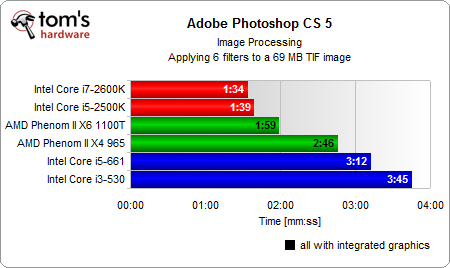
The results in Photoshop show the impact of Intel switching from two cores and four threads to at least four physical cores, as the Core i5-2500K is roughly twice as fast as the Core i5-661. Both new Intel CPUs are clearly faster than AMD’s top-of-the-line six-core processor as well.
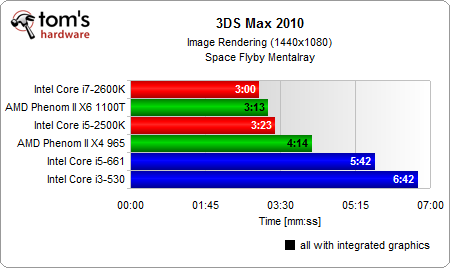
AMD’s Phenom II X6 1100T at 3.3 GHz shows nice performance in 3ds Max 2010, but it turns out that the new Core i5-2500K is almost as fast.

The results in HandBrake are similar to those seen with 3ds Max.
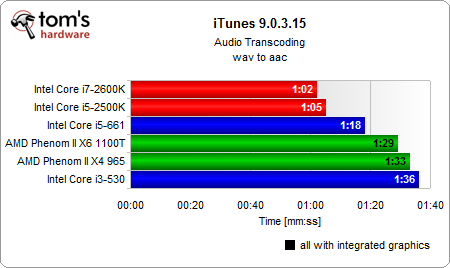
iTunes still isn’t optimized for multiple threads, which is an advantage for the processors that run fast clock speeds and high Turbo Boost multipliers--namely the Sandy Bridge generation. One thread can maintain peak Turbo Boost clock speed for quite some time. In our case it appeared to be indefinite.

Lame is also only able to take advantage of a single core, so the outcome doesn't change. Sandy Bridge wins again.
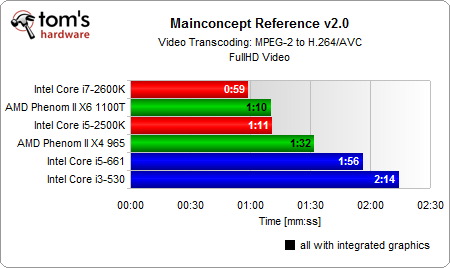
The powerful six-core Phenom II X6 is strong in MainConcept. We find it impressive to see that Intel’s new generation requires only four cores to deliver the performance AMD reaches with six. This will likely translate to positive results in Intel's favor once we dive into efficiency.
Get Tom's Hardware's best news and in-depth reviews, straight to your inbox.

PDF creation using Adobe Acrobat 9 Professional requires fast clock rates more than anything else, which once again results in great scores for Intel’s new Core i5-2500K and i7-2600K.
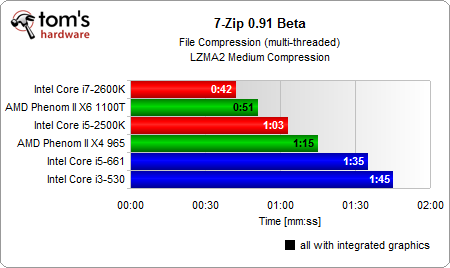
Our results are similar in 7-Zip: the six-core Phenom II can keep the pace, everything else cannot.


Current page: Benchmark Results: Integrated Graphics Performance
Prev Page Test Setup And System Details Next Page Benchmark Results: Discrete Graphics Performance